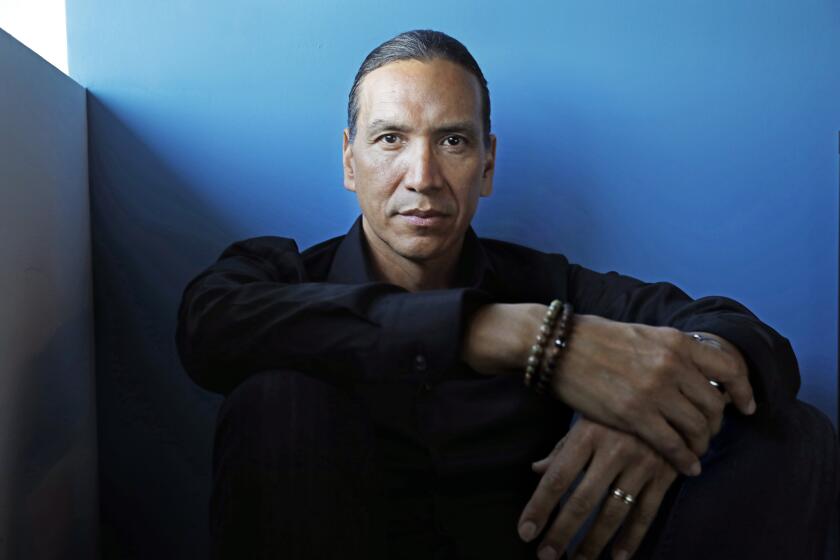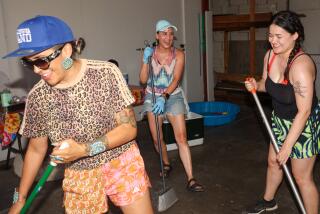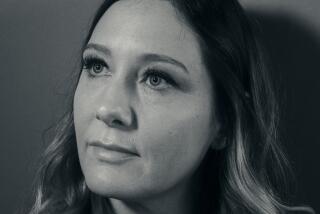Stereotypes. Taboos. Critics. This Navajo cultural advisor is no stranger to stress
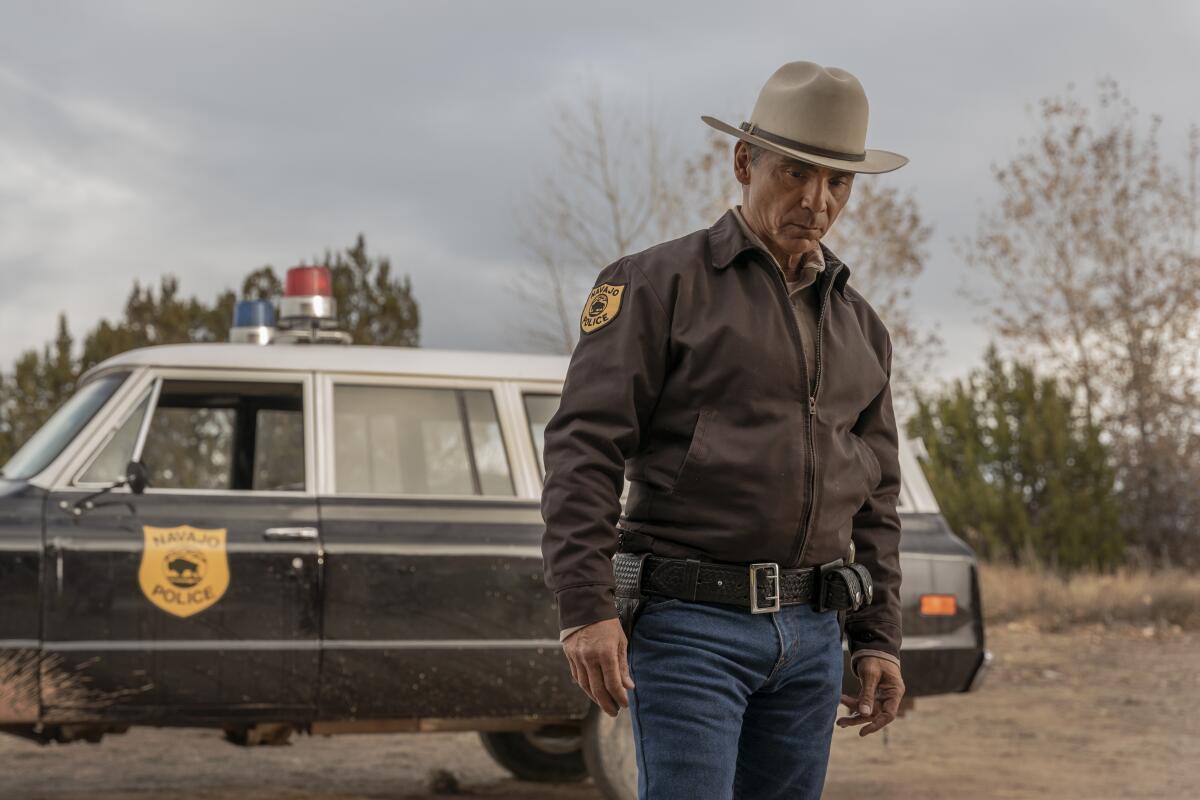
When I was a kid, my parents briefly moved the family to a conservative border town just off the Navajo reservation in northeastern Arizona so my dad could work in a lumber mill. My childhood memories are filled with fistfights with ignorant, non-Native kids who mocked our ceremonial dancing by yelling out whoops and performing tomahawk chops, mimicking the stereotypes they saw on television portraying my people as backward savages and uncivilized heathens. I was proud of my heritage and my culture, but this demeaning treatment still left me ashamed.
In October 2022, I received an unexpected opportunity to serve as the Navajo cultural advisor for the second season of AMC’s noir crime series “Dark Winds.” Even though I knew nothing about the entertainment business, I jumped at the opportunity. I don’t have a film degree, have never worked on a set or had an interest in the industry – but I had earned two master’s degrees and worked as an English professor at a Navajo college founded on maintaining Navajo culture and language, as well as developed my own Navajo tourism website. In my new role, I saw an opportunity to make an impact from within by helping create more accurate portrayals of the Navajo culture.
My advantage: I am a full-blooded and fluent-speaking Navajo, born and raised on the reservation alongside eight siblings in the 1970s — the time period in which “Dark Winds,” based on the series of novels by Tony Hillerman, is set. Our story was like many on the reservation: no running water, indoor plumbing or electricity. Only my father spoke some English and had a fifth-grade education. Like most Navajos during that era, weekends were spent fully immersed in Navajo culture and traditional practices.
Michael Greyeyes (‘Rutherford Falls’) and Devery Jacobs (‘Reservation Dogs’) look back on a milestone year for Indigenous representation on screen.
Upon being hired, it was sink or swim, so I had to quickly learn the trade. I read scripts and any production documents I could get my hands on. I figured out how the various departments operated, including props, production design, costumes, hair and makeup, background — and how to work best with the creative minds behind the series. Reading five books on moviemaking along with very supportive colleagues helped. It truly took a village. About 95% of the “Dark Winds” cast is Indigenous as is the majority of the production team, including the writers, producers, props team, stunts team, wardrobe and more. Keeping accuracy across the series was important to all of us.
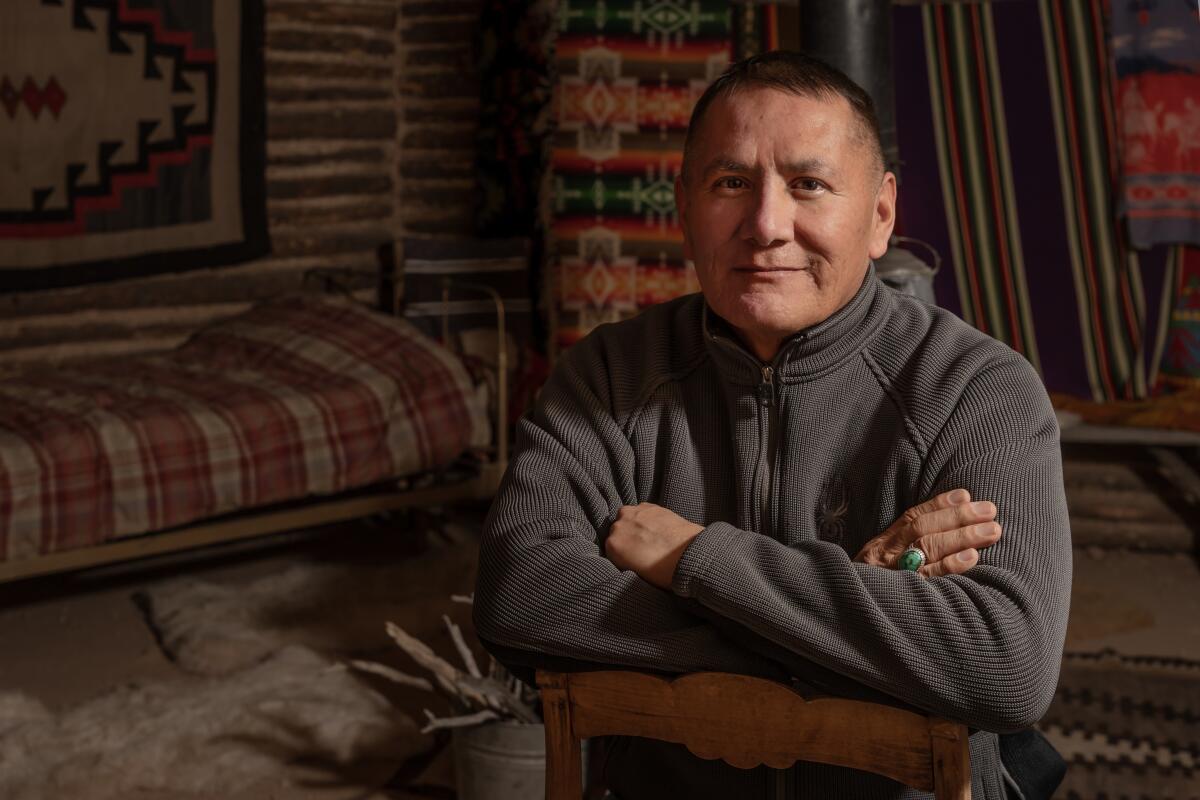
When certain details — the shape of a man’s hair bun versus a woman’s, the proper handling of a corn pollen bag, the physical movements of prayer or a laughing ceremony — needed authenticity management, I was happy to lead. I liaised with the costume department on aspects of the wardrobe based on what my parents, aunts and uncles wore. I did the same with hairstyles, mannerisms, even the etiquette of the era. With the set design and prop teams, I made sure there was accuracy — across culture and period — in the placement of certain items and setups. I consulted family and friends, and my older sisters Lori and Rita even sent high school photos from the 1970s.
One area of concern was subject matter that could be considered “cultural appropriation.” I am as “Rez” as one can be, but I had to step outside my daily perspective and look at things from the viewpoints of non-reservation Navajos. Consider Navajo Skinwalkers. What non-Navajos would consider evil beings who bring illness, poverty, hate and even death, Skinwalkers may be taboo, yet they are a part of everyday Navajo life. Traditional Navajo dare not discuss or talk about them, as we believe you invite them — mentally and literally — and there are those who find their depiction on TV offensive, believing it reinforces stereotypes. While I pushed for accuracy, as Skinwalkers do exist and are a facet of Navajo culture, the decision was ultimately made not to represent Skinwalkers in “Dark Winds” due to the cultural sensitivity of the subject.
The complete guide to home viewing
Get Screen Gab for everything about the TV shows and streaming movies everyone’s talking about.
You may occasionally receive promotional content from the Los Angeles Times.
Another major challenge was the Navajo language. Our language and culture continues to modernize and vary by region, same as English. On the northeast side of the reservation, the Navajo word for “snow” or “coffee” is different from the other side of the reservation — similar to using “pop” versus “soda” across the U.S. In many regions, words are often abbreviated and there is increased use of slang. The language, known as Diné (which means Navajo), even has its own “tom-AY-to / to-MAH-to” discrepancies, as well as differences in spelling, despite authoritative language books. In every Navajo-to-English conversion, there are at least 10 different ways to translate a sentence or meaning. I decided that in some situations, translations could not be direct or literal, so I created a style guide that enabled the non-Native-speaking actors to make the right sounds, shortened sentences and simplified the dialogue, all while remaining consistent with the script.
It is the Navajo belief that without our culture and language, the Gods (Diyin Dine’e) will not know us and we will disappear as a people. And the Navajo Nation is just one of many tribes that have taken steps to preserve their history: There are 574 federally recognized tribes in America today, each with its unique language, culture, history, heritage and traditional teachings. As such, the Native Americans working in entertainment to portray our culture, language and traditions with respect and compassionate accuracy aren’t just reacting to generations of harmful misrepresentation onscreen — they are also celebrating the survival of a vibrant heritage against centuries of government-ordered extermination, harsh and oppressive colonization and forced assimilation.
My role on “Dark Winds” brought great stress because of the tremendous responsibility of getting it right — at times, I felt the weight of my people on my back. But there will always be critics. All I can do is be grateful to my parents for raising me as a Navajo who can confidently walk in both worlds, and to bring that background to bear on our representation onscreen.
George R. Joe (Navajo) has a bachelor’s and master’s in English, as well as a master’s in educational leadership. He has been a college English professor and has over 25 years of experience in journalism, marketing and publishing. He currently serves on the board of Southwest Center for Equal Justice and is the owner of NavajoGuide.com.
More to Read
The complete guide to home viewing
Get Screen Gab for everything about the TV shows and streaming movies everyone’s talking about.
You may occasionally receive promotional content from the Los Angeles Times.
